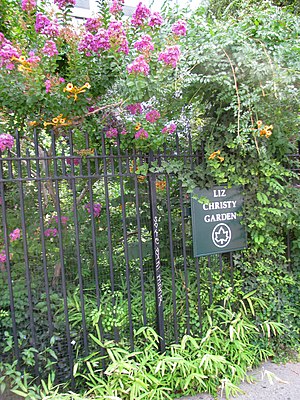
A road verge is a strip of grass or plants, and sometimes also trees, located between a roadway (carriageway) and a sidewalk (pavement). Verges are known by dozens of other names, often quite regional; see Terminology below.

The East Village is a neighborhood on the East Side of Lower Manhattan in New York City, United States. It is roughly defined as the area east of the Bowery and Third Avenue, between 14th Street on the north and Houston Street on the south. The East Village contains three subsections: Alphabet City, in reference to the single-letter-named avenues that are located to the east of First Avenue; Little Ukraine, near Second Avenue and 6th and 7th Streets; and the Bowery, located around the street of the same name.
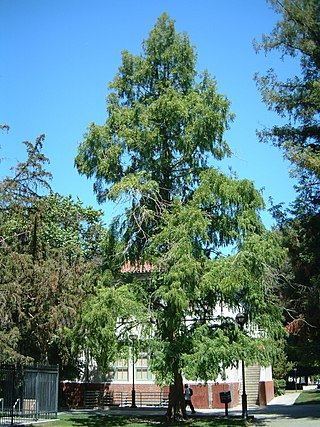
Metasequoia, or dawn redwoods, is a genus of fast-growing deciduous trees, one of three species of conifers known as redwoods. The living species Metasequoia glyptostroboides is native to Lichuan county in Hubei province, China. Although the shortest of the redwoods, it grows to at least 165 feet in height. Local villagers refer to the original tree from which most others derive as Shuǐshān (水杉), or "water fir", which is part of a local shrine. Since its rediscovery in 1944, the dawn redwood has become a popular ornamental, with examples found in various parks in a variety of countries.

An arboretum is a botanical collection composed exclusively of trees of a variety of species. Originally mostly created as a section in a larger garden or park for specimens of mostly non-local species, many modern arboreta are in botanical gardens as living collections of woody plants and is intended at least in part for scientific study.

The New York Botanical Garden (NYBG) is a botanical garden at Bronx Park in the Bronx, New York City. Established in 1891, it is located on a 250-acre (100 ha) site that contains a landscape with over one million living plants; the Enid A. Haupt Conservatory, a greenhouse containing several habitats; and the LuEsther T. Mertz Library, which contains one of the world's largest collections of botany-related texts. As of 2016, over a million people visit the New York Botanical Garden annually.

Urban forestry is the care and management of single trees and tree populations in urban settings for the purpose of improving the urban environment. Urban forestry involves both planning and management, including the programming of care and maintenance operations of the urban forest. Urban forestry advocates the role of trees as a critical part of the urban infrastructure. Urban foresters plant and maintain trees, support appropriate tree and forest preservation, conduct research and promote the many benefits trees provide. Urban forestry is practiced by municipal and commercial arborists, municipal and utility foresters, environmental policymakers, city planners, consultants, educators, researchers and community activists.

The Bowery is a street and neighborhood in Lower Manhattan in New York City, United States. The street runs from Chatham Square at Park Row, Worth Street, and Mott Street in the south to Cooper Square at 4th Street in the north. The eponymous neighborhood runs roughly from the Bowery east to Allen Street and First Avenue, and from Canal Street north to Cooper Square/East Fourth Street. The neighborhood roughly overlaps with Little Australia. To the south is Chinatown, to the east are the Lower East Side and the East Village, and to the west are Little Italy and NoHo. It has historically been considered a part of the Lower East Side of Manhattan.
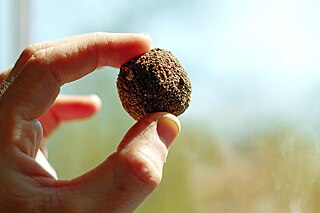
Seed balls, also known as earth balls or nendo dango, consist of seeds rolled within a ball of clay and other matter to assist germination. They are then thrown into vacant lots and over fences as a form of 'guerilla gardening'. Matter such as humus and compost are often placed around the seeds to provide microbial inoculants. Cotton-fibres or liquefied paper are sometimes added to further protect the clay ball in particularly harsh habitats. An ancient technique, it was re-discovered by Japanese natural farming pioneer Masanobu Fukuoka.

Guerrilla gardening is the act of gardening – raising food, plants, or flowers – on land that the gardeners do not have the legal rights to cultivate, such as abandoned sites, areas that are not being cared for, or private property. It encompasses a diverse range of people and motivations, ranging from gardeners who spill over their legal boundaries to gardeners with a political purpose, who seek to provoke change by using guerrilla gardening as a form of protest or direct action. This practice has implications for land rights and land reform; aiming to promote re-consideration of land ownership in order to assign a new purpose or reclaim land that is perceived to be in neglect or misused. Some gardeners work at night, in relative secrecy, in an effort to make the area more useful or attractive, while others garden during the day for publicity.
An urban forest is a forest, or a collection of trees, that grow within a city, town or a suburb. In a wider sense, it may include any kind of woody plant vegetation growing in and around human settlements. As opposed to a forest park, whose ecosystems are also inherited from wilderness leftovers, urban forests often lack amenities like public bathrooms, paved paths, or sometimes clear borders which are distinct features of parks. Care and management of urban forests is called urban forestry. Urban forests can be privately and publicly owned. Some municipal forests may be located outside of the town or city to which they belong.

The Vauxhall Gardens, was a pleasure garden and theater. It was named for the Vauxhall Gardens of London. Though the venue passed through a long list of owners, and suffered buyouts, closings, relocations, and re-openings, it lasted until the mid-19th century.
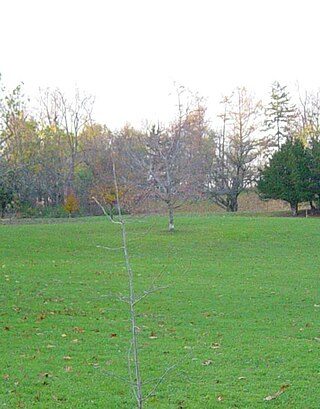
The James Pass Arboretum was established by the City of Syracuse, New York through the philanthropy of Adelaide Salisbury Pass and family with the guidance and cooperation of the State College of Forestry to be a classic arboretum in the tradition of the Arnold Arboretum in Boston, Massachusetts, that is, a museum of woody plants designed for education and horticultural display.

La Plaza Cultural de Armando Perez is a community garden and public green space in the East Village neighborhood of Manhattan, New York City. Serving as a community garden, park, playground, wildlife refuge, urban farm, community composting site, and performance venue, La Plaza Cultural is also utilized by local day-care centers, after-school programs and a growing number of parents with small children. The garden has been known to grow a number of various edible plants including fruits, vegetable, and herbs. The lot is approximately 0.64 acres and consists of at least 11 members.
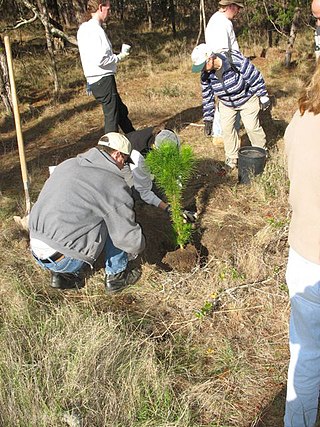
Urban reforestation is the practice of planting trees, typically on a large scale, in urban environments. It may also include urban horticulture and urban farming.
Community gardens in New York City are urban green spaces created and cared for by city residents who steward the often underutilized land. There are over 550 community gardens on city property, over 745 school gardens, over 100 gardens in land trusts, and over 700 gardens at public housing developments throughout New York City. The community garden movement in NYC began in the Lower East Side during the disrepair of the 1960s on vacant, unused land. These first gardens were tended without governmental permission or assistance.
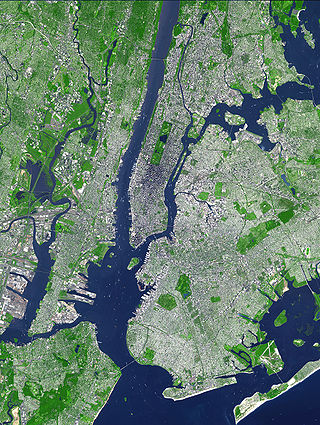
The land comprising New York City holds approximately 5.2 million trees and 168 different tree species, as of 2020. The New York City government, alongside an assortment of environmental organizations, actively work to plant and maintain the trees. As of 2020, New York City held 44,509 acres of urban tree canopy with 24% of its land covered in trees.
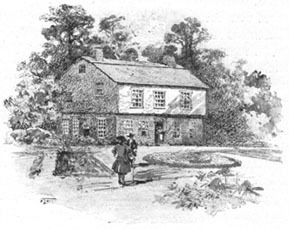
Stuyvesant Farm, also known as the Great Bowery, was the estate of Peter Stuyvesant, the last Dutch director-general of the colony of New Netherland, as well as his predecessors and later his familial descendants. The land was at first designated Bowery No. 1, the largest and northernmost of six initial estates of the Dutch West India Company north of New Amsterdam, used as the official residence and economic support for Willem Verhulst and all subsequent directors of the colony.
The Green Guerillas are a community group of horticulturalists, gardeners, botanists, and planners who work to turn abandoned or empty spaces in New York City into gardens. Formed in the 1970s, the group threw "seed grenades" into derelict lots and developed community gardens, often without going through official channels. It became especially popular after the concerted redevelopment of a dangerous, trash-filled space at the corner of Houston Street and Bowery in Manhattan. The resulting press coverage and word of mouth led the group to broaden its activities from active gardening to education, training, and support for a number of community groups working on their own gardens. The Green Guerillas have been credited with beginning the community garden movement and popularizing the idea of guerilla gardening.
